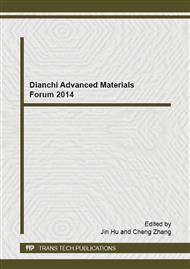p.205
p.209
p.213
p.217
p.221
p.229
p.236
p.240
p.244
A Comparative Study on Radio-Frequency Thermal Plasma Spheroidization for Two Types of Alumina Ceramic Powder
Abstract:
To obtain high-performance alumina powder for high-tech application, a comparative study was carried out for the spheroidization of two types of alumina powder using radio-frequency argon-oxygen thermal plasma. The morphology, crystallography, and particle size distribution of spheroidized alumina powder were analyzed. The effect of feed rate on the spheroidization efficiency was investigated. The results show that when the powder flow rate was 35 g/min, the spheroidization efficiency reached up to 100%, and the alumina powder had perfect sphericity, while the spheroidization efficiency decreased with increasing powder flow rate. The X-ray diffraction analysis reveals that the spheroidized alumina powder had mixed crystal structures with a stable α phase and a part of metastable phase. The particle size distribution analysis shows that the particle size of the spheroidized alumina powder did not change obviously. These results will help us to better understand the process engineering of the spheroidization of ceramic powder using radio-frequency argon-oxygen thermal plasma, and provide simultaneously technical assistance for industrialization.
Info:
Periodical:
Pages:
221-225
Citation:
Online since:
November 2014
Authors:
Keywords:
Price:
Сopyright:
© 2014 Trans Tech Publications Ltd. All Rights Reserved
Share:
Citation:


